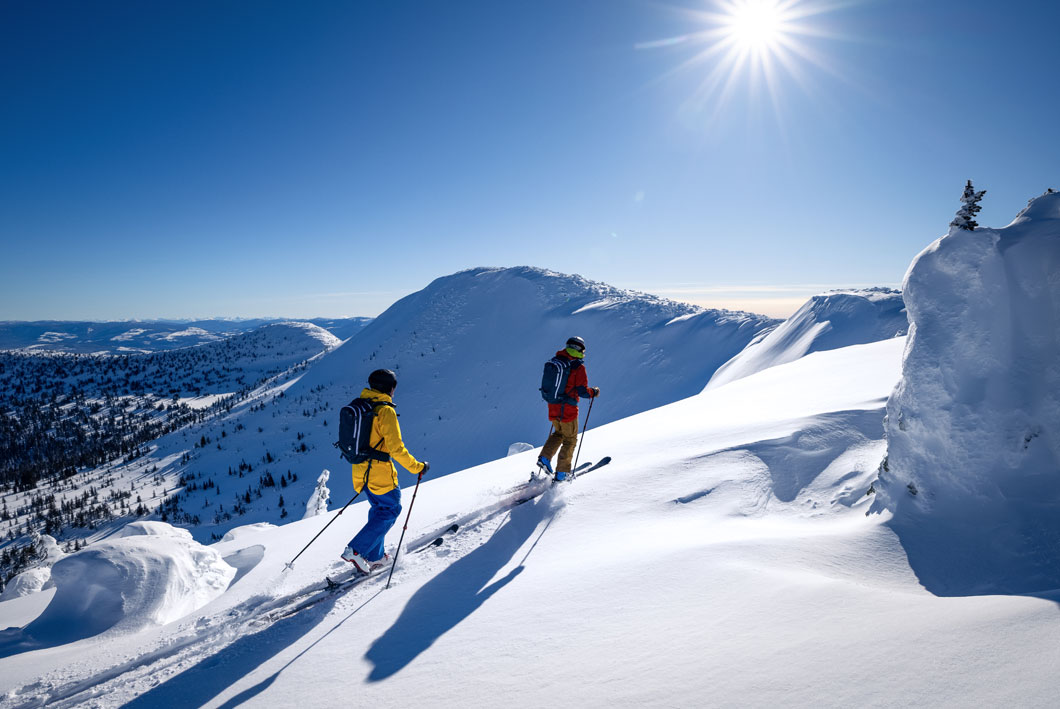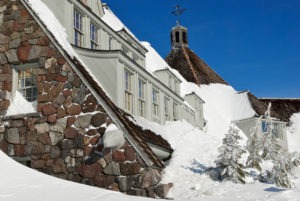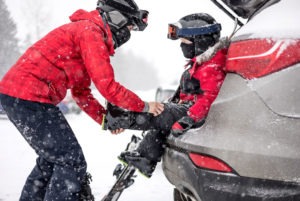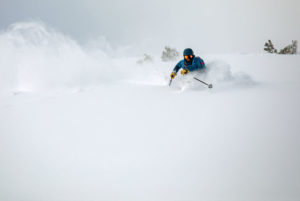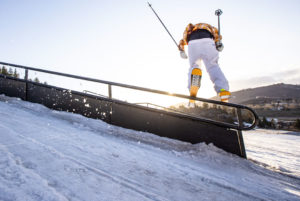Whether you’re headed to a ski resort or are hitting up the backcountry, staying safe should be your top priority. The risk of injury comes with any kind of physical sport and being outside in the harsh elements also carries many risks of its own.
From tips and tricks to the proper ski safety equipment, we’re going to cover everything you need to know about staying safe on the mountain, so keep reading if you’re planning a trip this season!
How to Stay Safe – Tips and Tricks
Ski in a group setting. Doing any kind of outdoor activity by yourself has the potential to put you in some dangerous situations, such as getting injured or lost. Skiing with other people will not only be more fun, but it will also keep you and everyone in your group safer. Even simply bringing along one other person is better than going at it alone!
Only ski on terrain you’re comfortable with. While testing your limits isn’t always a bad thing, it’s important to stay where you’re comfortable, especially if you’re new to skiing. Heading out on new terrain too early on when you’re not confident enough in your skills can result in a greater risk of injury.
Look both ways. This is something we’re taught when crossing the street, but it’s also important when entering an area where trails are merging. You don’t want to risk injuring (or being injured by) another skier who can’t stop in time!
Don’t push yourself when you get tired. It can be easy to want to stay out on the slopes all day, especially if you’re having a great time, but listen to your body. If you’re starting to feel fatigued, that’s a good sign that you should take a rest. Skiing while worn out is another way to put yourself at a greater risk of injury.
What You Need to Stay Safe – Ski Safety Equipment
Helmet
The most important piece of ski safety equipment is a helmet! Even if you’ve been skiing for years, you never know when a fall could lead to a serious injury. Because head injuries can be the most detrimental, helmets are an essential part of your ski safety equipment that you should never forget to wear while you’re on the slopes!
Extra Padding
This is especially helpful for those who are newer to skiing. Knee pads, elbow pads, and other padding may seem like ski safety equipment for children or those just learning, but they can help you avoid any bruises, bumps, or other injuries. Whether you’re new or advanced, falls happen, so it’s best to be prepared with the right equipment!
Water Bottle
Hydration is key! Take a refillable water bottle with you and take plenty of water breaks in between your runs so that you don’t become dehydrated or feel sick.
Sunscreen
Yes, even in the winter! Because the sun’s rays are powerful and reflect off the snow, you’ll likely get a little sunkissed (if not sunburned) on areas of exposed skin, so lather on the sunscreen and keep a little extra with you in case you need to reapply later in the day.
Snacks
Some ski lodges and resorts have places to grab food, but it’s never a bad idea to bring some snacks along with you. Choose something like a sandwich or granola bars that will help you keep your energy levels up so you can enjoy the slopes all day! While this isn’t necessarily safety equipment it’s important to carry in case you find yourself further along the trail map than you intended or even stuck on the mountain.
Phone and Portable Charger
Your cell phone should be a given when it comes to ski safety equipment but bringing along a portable phone charger of some kind is also a good idea. Your phone’s battery may drain faster out in the cold and being able to charge it will ensure that you have a way of calling for help in case of any emergencies in places where you’re not easily able to reach help on foot. Also, keep your phone in an interior pocket close to your body, so it stays as warm as possible.
For backcountry skiers
Backpack with Airbag System
Anytime you’re in the backcountry, you’ll want to be sure you’re prepared in the off chance that you get caught in an avalanche. A backcountry backpack with an airbag system can help you stay above the snow if this happens.
Beacon
A beacon is another piece of ski safety equipment that is important to bring along anytime you’re skiing in the backcountry. It will send out a signal and help you be found. It can truly be a life-saving device!
Shovel and Probe
Along with airbags and a beacon, a shovel and probe are also essentials. A probe will be able to help you find any avalanche victims as well as help you measure the depth of the snow. A shovel will allow you to dig them out or help you dig through any deep areas you’re trying to trek through.
Walkie-Talkies
If you know you’re going to be backcountry skiing in areas with limited cell phone coverage, you may want to consider bringing a long-range walkie-talkie so that you can communicate with someone in case of emergency.
Compass
It always helps to know where you’re going, and a good old-fashioned compass is a piece of safety equipment that’s so small it’s definitely worth bringing along with you! It’s easy to pack, no excuses there.
Blanket or Extra Layers
Last but not least, packing a blanket or extra base layer tops and bottoms along with you is never a bad idea, in case you get stranded and need something extra to stay warm.
Be sure to also check out our backcountry ski gear if you’re headed out to the mountain this season. But wherever you’re planning to go, be sure you stay safe by keeping some of these tips in mind as well as adding these ski safety equipment items to your packing list!
